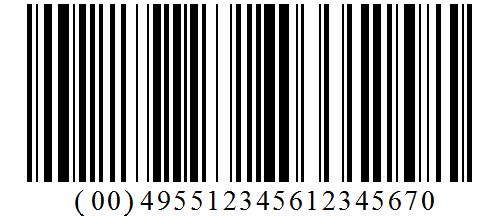Thousands of goods are traded daily. These goods are transported via a number of transportation modes either through land, sea or air. They are packed in multitudes of packaging configurations and are referred to as a logistic unit. A logistic unit can be a single item, carton, pallet or container and is made up of the composition of a standard or homogeneous combination of inner packs or units.
At various points in the supply chain, every party would require some information to receive, track, sort, store or pick the goods. Therefore, the physical flow of the logistic unit must always be accompanied by its supporting documents that carry information pertaining to the logistics units. In a more sophisticated distribution system, whereby business information is communicated electronically, a link is required to associate between the physical flow and the information pertaining to the logistic unit. With companies handling thousands of shipments from multiple suppliers or for multiple consumers, an efficient and speedy system is required to control the transportation and be able to retrieve information of the goods being transported. To enable this, a system of identification is required which would uniquely identify the logistic unit in a format readable by machine for automated processes to track and trace its physical flow. What is most important is that the system of identification should follow a standard such that it can be used and understood by every party along the supply chain.
To fulfil this requirement, the GS1 System provides for the identification of the logistic unit. The identification code, referred to as the Serial Shipping Container Codes (SSCC), is a non-significant 18-digit number that purely identifies the logistic unit. SSCC can be used by all parties in the transport and distribution chain to extract all the relevant information held about the logistic unit.
The numbering structure of the SSCC consists of the extension digit, GS1 company prefix, item reference and a check digit.

Extension Digit - Any digit between 0 to 9 assigned by the company that identifies the logistic unit. It is used to increase the capacity of the SSCC
GS1 Company Prefix - Assigned by the member organisation to the company. It identifies a company uniquely worldwide
Item Reference - This is a serial number that uniquely identifies a logistic unit. This serial number would be an addition of the Extension and GS1 Company Prefix to complete the 17-digit number (excluding the check digit).
Check Digit - It is the last digit calculated with a formula from the 17 preceding digits. The check digit is to ensure the bar code has been correctly scanned or the number has been correctly composed.
SSCC identifies a logistic unit for the lifetime of that unit. For automated capture of the logistic unit identification into a computerised system, it is represented in GS1-128 barcode symbol.

The application of SSCC by different parties in the transport and distribution chain:
|
Supplier |
|
|
|
|
Carrier |
|
|
|
|
Customer |
|
|
|
Among the many benefits of SSCC
-
When SSCC is employed with EDI application it can facilitate various logistical functions such as :
-
Serial identification of containers
-
Tracking and tracing of individual containers
-
Efficient shipment routing by carrier
-
Accurate receipt information for inventory system
-
Efficient receiving and distribution process through automation
-
-
SSCC can optimise the flow of goods because:
-
It is a common tracking and tracing tool.
-
It can ensure efficient space management in warehouses.
-
It can improve the inventory management.
-
-
SSCC can optimise the flow of information because:
-
It provides immediate availability of logistics information.
-
It provides a link between the business information to the goods.
-
It provides a common solution for all partners world-wide.
-
It is represented in a bar code form, an effective means of capturing information.
-
-
SSCC can minimise administrative and accounting operations through:
-
Automated administration and account processes can be automated.
-
Facilitation of payment between logistics provider and customer.
-
A single data entry system thus avoids multiple manual key-in of data into the computer system.
-
Minimised errors.
-
